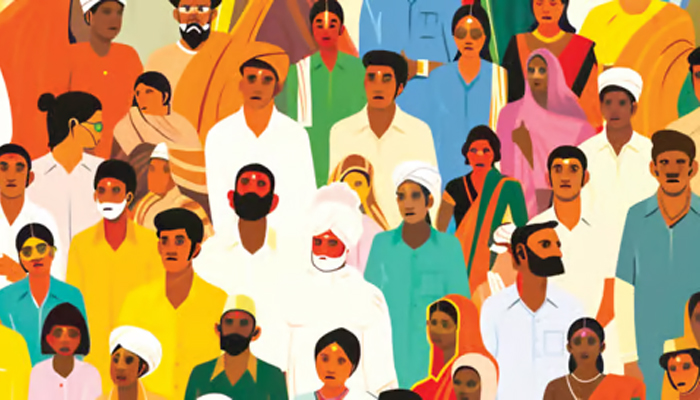By Sahil Sharma: The caste census has once again captured national attention as discussions unfold over whether to include a caste column in the upcoming census. Typically conducted every decade, the last census occurred in 2011, with the 2021 iteration delayed due to the COVID-19 pandemic. As plans are revisited, a pivotal question emerges: Should caste be documented this time around?
Traditionally, the census records data on age, religion, gender, and domicile, but the inclusion of caste is now under serious consideration. The government has yet to make a final decision, but the debate itself is notable. To clarify the current discourse: What is a caste census? What is being debated now? Why is this issue coming up, and what potential benefits might it offer India?
A caste census involves recording the caste of every Indian, encompassing General, Scheduled Caste, and Other Backward Classes. The last such census was conducted in 1931, which found that 52% of the population was classified as Other Backward Classes (OBC). The census was discontinued afterward amid concerns that it might reinforce societal divisions. With no caste data published since then, the debate about its necessity is rekindled.
In 2024, both political and non-political factors fuel this debate. Caste-based politics remains significant in India, with many voters aligning with caste affiliations and political parties leveraging these dynamics. Congress leader Rahul Gandhi’s commitment to a caste census, should he be elected, appears to have bolstered his party’s position, leading to a notable increase in seats.
From a non-political standpoint, backward castes, who have historically faced oppression, form a majority of India’s population yet occupy a minority of powerful positions. India’s quotas for jobs and educational admissions, capped at 50%, aim to address this disparity. Updated caste data might reveal a need to reconsider these quotas to ensure social justice. For example, Bihar’s 2023 caste data indicated that 84% of its population belongs to marginalized castes, influencing political dynamics and supporting Chief Minister Nitish Kumar’s prominence in the NDA government.
The ruling Bharatiya Janata Party (BJP) has largely remained neutral on the caste census issue, though recent developments include support from its ideological ally, the RSS, provided it avoids political manipulation. The government’s sensitivity to caste and quota issues has been evident, as demonstrated by the controversy surrounding non-bureaucratic appointments to key positions without applying quotas. This backlash led to a reversal, highlighting the government’s awareness of caste-related concerns.
The potential impact of a caste census on policy decisions is significant. For instance, Bihar’s attempt to increase quotas from 50% to 65% following its caste census faced legal challenges and was ultimately rejected by the High Court. This underscores the complexity of implementing quotas effectively despite legal constraints.
Addressing these issues requires more than just a caste census; it necessitates broader systemic changes and investment in the education and social integration of backward castes. While a caste census could provide valuable data, its effectiveness in resolving deep-rooted social issues will depend on comprehensive and systemic reforms.
